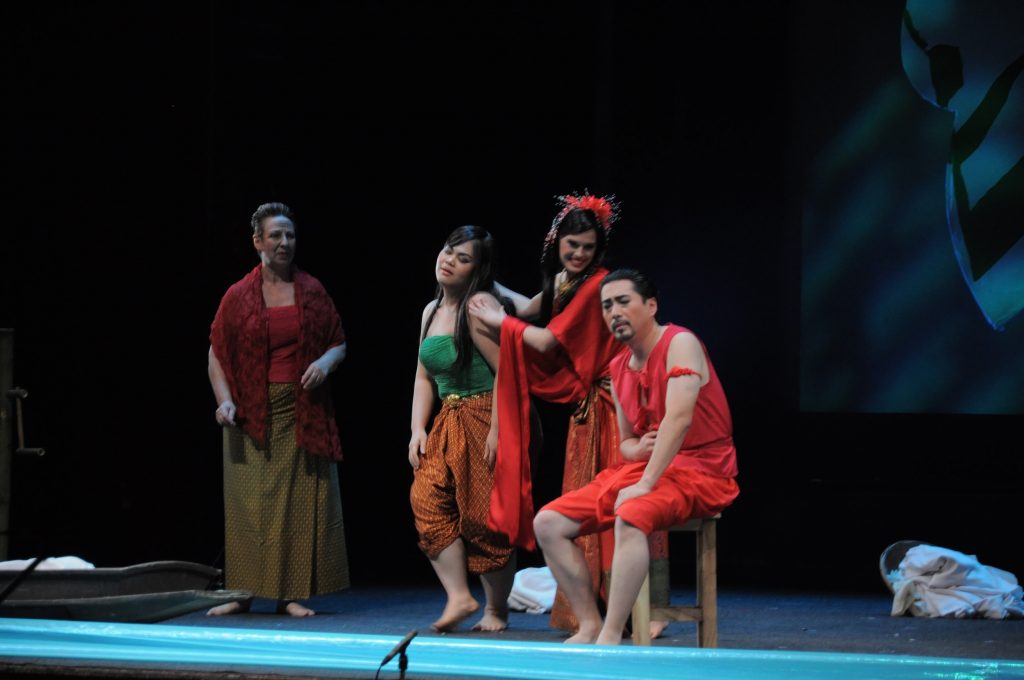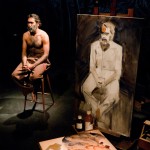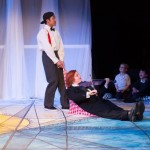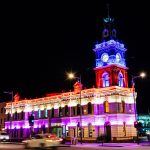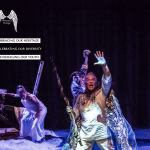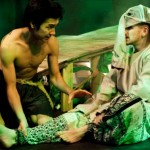Genre: Opera and Operatic Theatre
Venue: Bloomsbury Theatre , Gordon Street, London WC1H 0AH
Low Down
Opera Siam’s European premiere production of Mae Naak at the Bloomsbury last night, by composer and librettist Somtow Sucharitkul (aka S. P Sowtow), proves that it continues to engage audiences all around the world. First staged in 2003, it is a stunning work that fuses a European operatic style with Thai folkloric music. Arguably, such a synthesis reflects the global experiences of S. P. Sowtow himself, whose English scholarship (he was educated at Eton and Cambridge) and links to English musical traditions seems to have been successfully negotiated with his role as founder of the Bangkok Opera and the Siam Philharmonic.
Review
The London production consists of: the Philharmonic orchestra, with its exciting young conductor, Trisdee na Pattalung; a corps de ballet; a substantial chorus and an array of major singers in lead roles around its star Nancy Yuen as Naak. Her appearance in London is made even more poignant as S. P. Sowtow created the role for her in 2003. Kyu Won Han as the husband Maak, Emma McNairy as the Temple Dance, Zion Daoratanahong as the Headman’s Daughter, Pitchaya Kemasingki as the Chinese Pork Merchant, Richard Cassell as the Abbot Monk and Novice Monk played by Saran Senavinin and Grace Echauri as the midwife form a formidable ensemble. The choreography is fresh with its blend of European balletic and Thai folkloric styles.
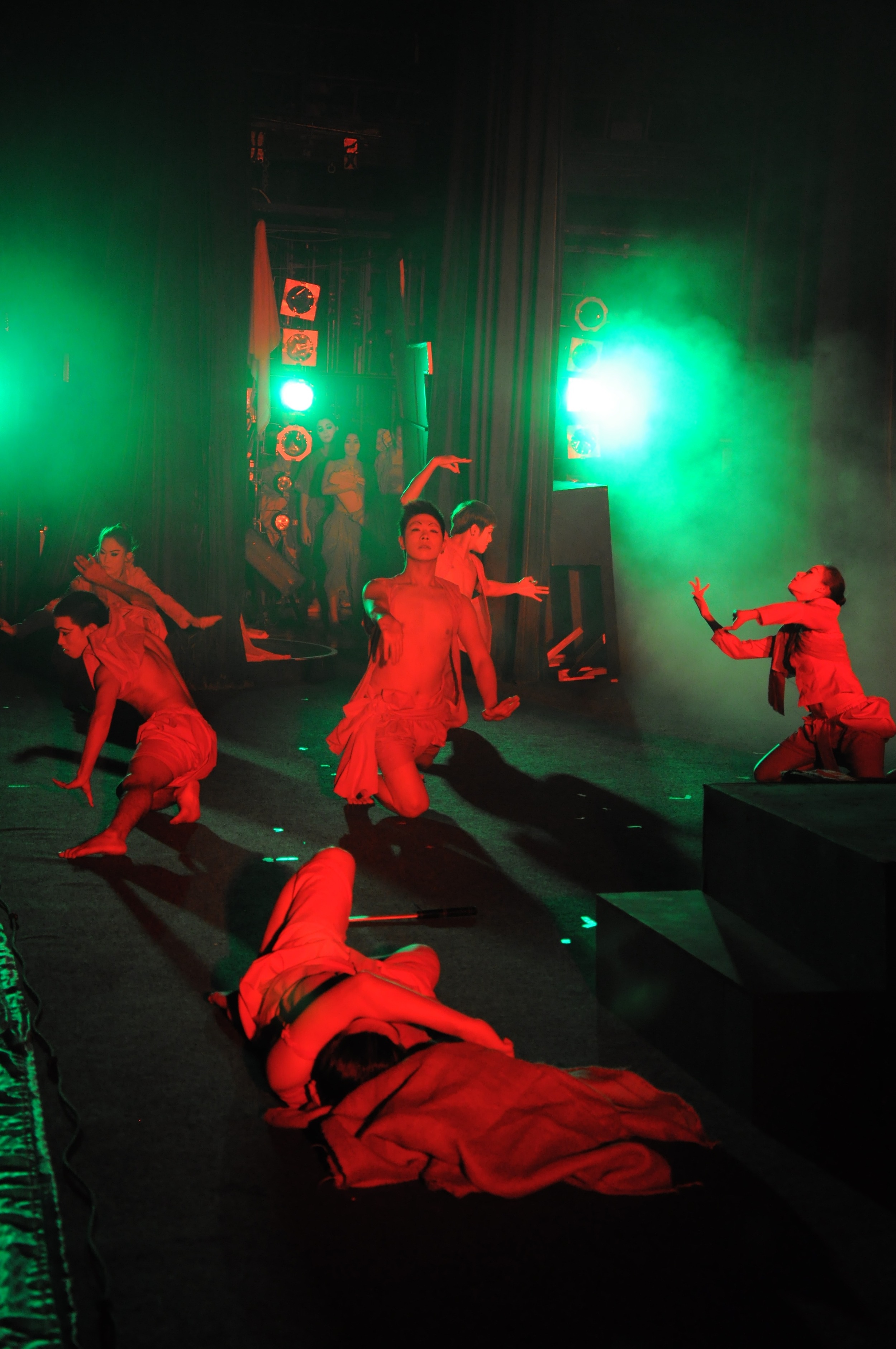
The story of Mae Naak is based on the theme of female vengeance in the tradition of Medea, and Clytemnestra and her Furies. The characterisation of Naak, however, also portrays her as a trickster who lures anyone to destruction who even dares to cross her. And unlike her European counterparts whose sights are set on avenging their traitorous husbands, her reign of terror arises because the circumstances of war take her beloved husband, Maak, from her and she wants him back. Her desires go beyond the grave, were she is placed after dying during childbirth with their stillborn son. Her ghostly figure, together with that of her infant child, walk the home and village waiting for her husband’s return. When that reunion occurs, the full extent of the horror that she brings on any person who might separate them again becomes the subject matter of the opera.
The differences noted here between European and Thai characters is in itself no more than an example of focusing on the subject matter on stage: an illustration of how audiences generally move from known to unknown stories. The process of meaning making throws up similarities and differences to sharpen the vision, like adjusting the lens to get a clearer image on a camera. But in tying together possible similarities – in this case the phenomenon of strong vengeful women – irreconcilable differences also erupt for the audience.
The story’s Thai context is framed by its Buddhist teachings on reincarnation and its depiction of rural village life that hints at an exotic Asia far from the traffic-jammed setting of its now large modern cities. But there is no trivialisation of Thai culture being enacted. Rather, the production interestingly depicts its own version of a post-colonial heritage through its portrayal of a fearsome woman who is responsible for destroying the idyllic rural setting time and time again on stage. Its operatic score, which is a fusion of German dramatic opera and traditional Thai folk music, makes for amazing listening as it builds dramatic tension at every moment of the story.
At the start of the evening, S. P Sowtow came before the audience and spoke of some the difficulties the production had encountered on its arrival at the theatre. He mentioned, for instance, that the original set design by Sumet Jumsai did not fit onto the Bloomsbury stage. And I must admit it was apparent throughout the spectacular show how the depth of the stage and the placement of its higher rises seriously interfered in the choreography and mystical effect of water and fog across the imaginary river at the front of the stage. This was unworthy of the high professional evident around the production. How had the choice of venue been made? Why wasn’t the production, for instance, staged in a venue which usuals attracts international shows like the Barbican? Why was its season for only three performances?
There is so much to engage with in Mae Naak. It deserves to been seen in its full splendour. It deserves to be shown for far more than a short three-night season. I recommend that it return to London again, not the least because of the wonderful character of Naak herself, whose strength and desire raises to the heights of a tragic heroine and who takes us through the music on a journey with someone battling to find peace.
Reviewed by Josey De Rossi Thursday 15 September, 2001
Website :
http://www.thebloomsbury.com/event/run/1593
http://www.bangkokopera.org/Opera_Siam_Main/Opera_Siam.html
